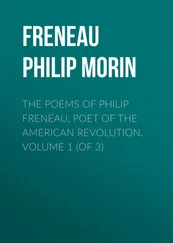Nevertheless, huge swathes of the country were still under rebel control, and the government’s tax income was falling steadily Then a spurious ‘Tsarevich Petr’, arrived at the rebel base of Putivl with a large entourage of Cossacks and reinforced his claim to rule by executing dozens of gentry. Before long he moved on to take the town of Tula. But there his forces found themselves besieged by tsarist troops for four months. Then a second false Dmitrii made an appearance near the Polish frontier. Who he really was is still a mystery, but he and his ‘retainers’ were well rehearsed in a repertoire of theatrical tricks designed to convince onlookers that he really was the rightful tsar, and he soon boasted an army that included mercenaries from Lithuania and Zaporozhian Cossacks, as well as the usual motley array of angry peasants and slaves, other Cossacks, and would-be Cossacks.
Tsarist forces captured Tula, Bolotnikov and ‘Petr’ in October 1607, and this persuaded the second ‘Dmitrii’ to postpone the offensive he was planning. Instead he fell back to the Polish frontier, regrouped his forces, and waited for more to join him. Then, advancing on Moscow, he established his headquarters at Tushino, less than 10 miles to the north-west. A large force of Polish troops also came up, sent by King Sigismund to secure the return of Polish prisoners captured when the first false Dmitrii was killed; then another rebel army approached as the Tsar was trying to reach an agreement with the Poles. And the chaotic chain of events only became more tangled, aided by bad faith on all sides.
The Tsar was isolated in Moscow; then Marina, widow of the first false Dmitrii, decided to ‘recognize’ the second false Dmitrii at Tushino, which bolstered the pretender’s credibility and his chances of establishing his rule over all Russia. But, although he now commanded the loyalty of more than half of the country, he lacked the funds to organize a proper government. He even lacked the wherewithal to supply and feed his own troops. They therefore had to live off the country and resort to forced confiscations and robbery in order to maintain themselves. The demands and depredations of the pretender soon seemed worse even than those of the Tsar, who had begun to confiscate Church plate.
Then the Tsar decided to cede territory to Sweden in return for the services of a force of mercenaries. The King of Poland now moved openly to capture the great frontier citadel of Smolensk. Russia’s neighbours were beginning moving in like jackals on a dying beast to dismember the Empire. And still the chaotic civil war continued. The false Dmitrii and Marina moved to Kaluga, and some of the more prominent of their erstwhile supporters, including Filaret Romanov and others of his family, thought of backing King Sigismund’s son Wladyslaw as candidate for the throne of Russia.
The damage to agriculture and the economy was as bad as the political damage. This was partly because of the disruption of the civil wars, but partly also the result of a renewal of vicious weather conditions. In 1607 there were serious floods in the Moscow region and deep frosts in western Russia, which prevented the germination of seedcorn and so precipitated yet another famine; in 1608 the crops in both central and western Russia were destroyed by a bitterly cold winter and heavy rainstorms in summer and autumn which washed out the harvest. There were epidemics and outbreaks of animal diseases that year too, and raging fires caused by lightning.
Bereft of support, the Tsar waited in the Kremlin for his fate to be decided. On 16 July 1610 the decision came. The power-brokers had decided to get rid of both him and ‘Dmitrii’ and to elect a new tsar. Vasilii Shuiskii was forced to become a monk, which emasculated him as a political actor. However, no agreement could be reached on who should succeed him, so a ministerial council of seven boyars assumed the task. In August they decided to elect Prince Wladyslaw, who had indicated his willingness to convert to Orthodoxy, as tsar. However, Wladyslaw himself now preferred to conquer Russia outright if he could, and other powerful Russians opposed his candidacy anyway. At last Zolkiewski, commander of the Polish forces which had managed to clear ‘Dmitrii’s’ army from the Moscow area, decided on a coup de main. He persuaded the more important potential Russian candidates to form a delegation to King Sigismund at Smolensk to discuss Wladyslaw’s election — and then had them arrested. So Vasilii Golitsyn, Filaret Romanov and others — including ex-tsar Vasilii Shuiskii — found themselves prisoners in Poland, where some of them were soon to die in mysterious circumstances. 27
Curiously enough it was Poland’s new role as the arbiter of Russia’s fate that served as a catalyst for Russia’s political recovery Whatever Russians, including the rebels, thought of their rulers, the tsars were at least Orthodox Christians. People reacted strongly against Poland because it was Roman Catholic and predatory. As he made clear in a message to Pope Paul V, King Sigismund aimed to accomplish what his predecessor Stefan Bathory had failed to do: to gain dominion over Russia and return it ‘from error and schism to obedience to the Holy See’. Sigismund revived the idea ‘all the more ardently since in addition to all the other enormous benefits that would accrue to Christendom from the subjugation of Moscow’ it would help him regain control of Sweden. 28The old revulsion felt by Orthodox Russians at the prospect of ‘Latinization’ welled up again, and was given more force by the behaviour of Polish troops in Russia. These sentiments were exploited with energy by the Russian Church to form one plank of a springboard to recovery. Another came spontaneously from Russian servicemen and government functionaries.
Their movement had begun early in 1611 in efforts to depose Vasilii Shuiskii and eliminate the pretender Dmitrii. As a letter sent from Iaroslavl to Vologda in February of that year put it:
The Poles have inflicted much oppression and outrage on the people of Moscow, and so the most holy Hermogen, Patriarch of Moscow and all Russia, and the people of Moscow had written to Prokofii Liapunov, leader of the gentry of Riazan province, and to the towns from the upper Oka to the lower Volga urging them to join together to march against the Poles… before they take Moscow… [This he had done and many soldiers had set out for Moscow] and you, gentlemen, should all stand firm in the Orthodox Christian faith, and not betray it for the Latin faith lest you destroy your souls. 29
Letters were also sent from Iaroslavl to Kazan, from Solvychegodsk to Perm, and between many other cities, urging that men be sent without delay, whether on horseback or on skis, and all sorts of people besides gentry were soon involved in the enterprise. Townsmen and peasants, local officials, humble servicemen, blacksmiths were all urged to raise soldiers, equip them, and march them to Moscow, where they were organized by a triumvirate consisting of Liapunov, Prince Dmitrii Trubetskoi and the Cossack leader Ivan Zarutskii. Russian patriots were soon on the march.
But even now the agony did not end. Swedish forces invaded, laid siege to Novgorod, and eventually took it. The Poles captured Smolensk, and Polish troops were still in Moscow. Hordes of predatory Russians were still battening on large areas and sucking them dry. And now other foreigners began to think that they could gain from Russia’s distress. The Pope wanted Russia for the access it would give his missionaries to reach all the heathens of Asia. King James I of England and Scotland wanted to gain control of Russia’s oriental trade. 30The Patriarch had been imprisoned by the Poles, yet a call to arms was issued in October 1611 by the abbot of the Trinity St Sergius Monastery at Zagorsk, and metropolitans, bishops and abbots across the land echoed his call. Even before that, scribes in towns throughout the realm wrote letters on behalf of the local governors and other notables, setting out the purpose of a mobilization, explaining the means, and trying to co-ordinate it: ‘We should take oaths ourselves, and get the Tatars and Ostiaks to swear their Muslim oath, so that… we make common cause with them for our true and incorruptible Orthodox faith… against the enemies and destroyers of our Christian faith, against the Poles and Lithuanians.’ They also made it clear that the next tsar must ‘be chosen by the entire land of the Russian realm’ rather than arbitrarily — in other words, that an Assembly of the Land must endorse the choice of sovereign. 31
Читать дальше





![Stephan Orth - Behind Putin's Curtain - Friendships and Misadventures Inside Russia [aka Couchsurfing in Russia]](/books/415210/stephan-orth-behind-putin-s-curtain-friendships-a-thumb.webp)





